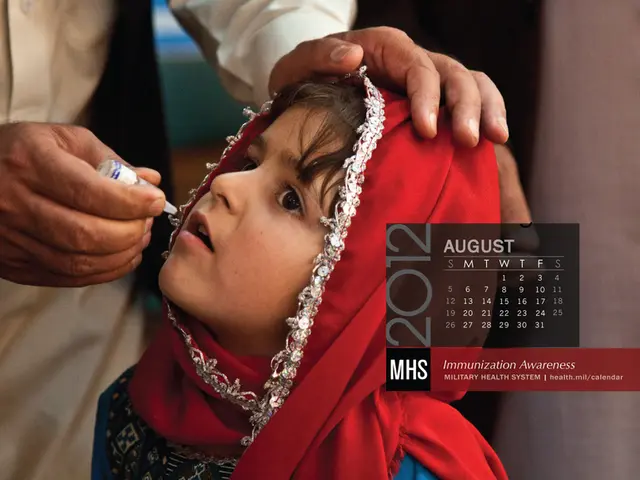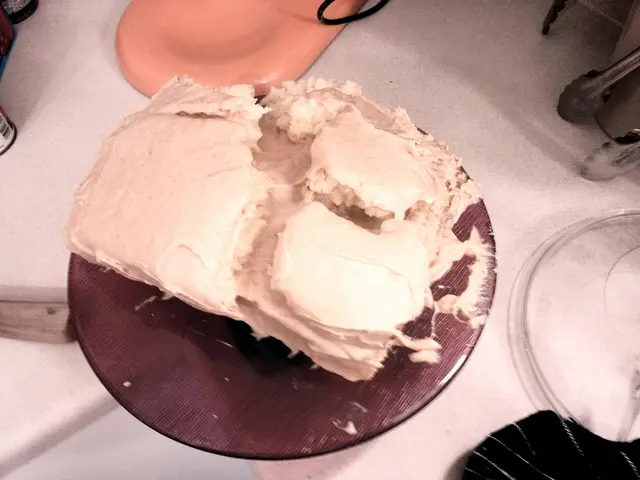Distinguishing age spots from skin cancer: A guide on spotting the variations
Hey there! Let's talk about Age Spots vs. Skin Cancer.
Age Spots, also known as liver spots or solar lentigines, are tiny, flat patches that appear darker than the surrounding skin. These spots are generally smooth, harmless, and do not itch or feel crusty. They develop as our bodies produce excess melanin to protect our skin from the sun's harmful UV rays. Age spots typically appear on areas exposed to sunlight, like our face, hands, shoulders, and arms, and are more common on light skin.
On the other hand, Skin Cancer is a type of cancer that can also appear on sun-exposed skin. It happens when skin cells get damaged by UV radiation or other environmental or genetic factors, causing them to grow and spread rapidly. Unlike age spots, skin cancer is harmful and can spread to other parts of the body if untreated. Skin cancer occurs in three main types: basal cell carcinoma, squamous cell carcinoma, and melanoma. Another precancerous growth that can resemble age spots is actinic keratosis.
When it comes to identifying the differences, size, shape, texture, and color of marks on the skin can help determine whether it's an age spot or a skin cancer. Age spots are defined with clear borders, are between a few millimeters or centimeters in size, and may appear yellow, brown, or gray. Skin cancer symptoms, however, are more irregular with asymmetrical shapes, blurred or ragged edges, multiple colors, and potential signs like bleeding, itching, oozing, and pain.
If you have any new or changing marks on your skin, it's essential to seek medical advice to monitor for potential signs of skin cancer. Catching cancer early makes it easier to treat. If you notice any marks that change in color, shape, size, or location, or if they appear different from other marks on your skin, contact a doctor as soon as possible.
In terms of treatment, age spots do not require treatment since they are not harmful. However, some people may choose to have cosmetic treatments to reduce their appearance. Possible treatments include creams, chemical peels, and laser therapy. Skin cancer treatment depends on the type, size, stage, and location, but options include surgical removal, chemotherapy, radiation therapy, targeted therapy, and immunotherapy.
In conclusion, while age spots are harmless and easy to identify based on their appearance, skin cancer requires constant monitoring for early detection and treatment. If you have any concerns about your skin, consult a healthcare professional for a proper diagnosis and advice. Stay safe and sun-smart! 🌞💪✨
- For seniors, age spots, often called liver spots or solar lentigines, are common skin conditions that develop due to excessive melanin production from UV rays.
- Unlike age spots, skin cancer is a serious medical condition that can appear on sun-exposed skin, caused by UV radiation or other factors.
- Skin cancer occurs in three main types: basal cell carcinoma, squamous cell carcinoma, and melanoma, the most dangerous type.
- Actinic keratosis is another precancerous growth that can resemble age spots, but it requires medical attention as it can develop into skin cancer if untreated.
- To identify the differences between age spots and skin cancer, one should look at size, shape, texture, and color of marks on the skin.
- Age spots are typically small, have clear borders, and are brown, yellow, or gray, while skin cancer symptoms are usually irregular, with asymmetrical shapes, blurred edges, multiple colors, and potential signs like bleeding, itching, oozing, and pain.
- If you notice any new or changing marks on your skin, it's essential to consult with a healthcare professional to monitor for potential signs of skin cancer.
- For age spots, while they do not require treatment, many people opt for cosmetic treatments like creams, chemical peels, and laser therapy to improve their appearance. However, skin cancer treatment depends on various factors such as the type, size, stage, and location of the cancer.








